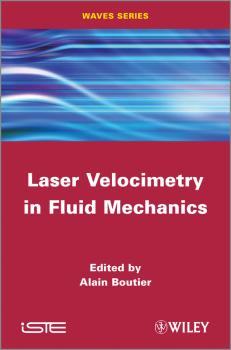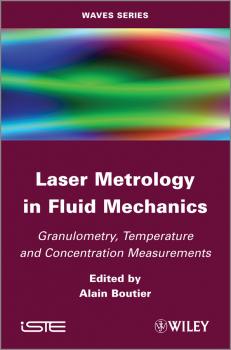ТОП просматриваемых книг сайта:
Alain Boutier
Список книг автора Alain BoutierАннотация
In fluid mechanics, velocity measurement is fundamental in order to improve the behavior knowledge of the flow. Velocity maps help us to understand the mean flow structure and its fluctuations, in order to further validate codes. Laser velocimetry is an optical technique for velocity measurements; it is based on light scattering by tiny particles assumed to follow the flow, which allows the local fluid flow velocity and its fluctuations to be determined. It is a widely used non-intrusive technique to measure velocities in fluid flows, either locally or in a map. This book presents the various techniques of laser velocimetry, as well as their specific qualities: local measurements or in plane maps, mean or instantaneous values, 3D measurements. Flow seeding with particles is described with currently used products, as well as the appropriate aerosol generators. Post-processing of data allows us to extract synthetic information from measurements and to perform comparisons with results issued from CFD codes. The principles and characteristics of the different available techniques, all based on the scattering of light by tiny particles embedded in the flow, are described in detail; showing how they deliver different information, either locally or in a map, mean values and turbulence characteristics.
Laser Metrology in Fluid Mechanics. Granulometry, Temperature and Concentration Measurements - Alain Boutier
Аннотация
In fluid mechanics, non-intrusive measurements are fundamental in order to improve knowledge of the behavior and main physical phenomena of flows in order to further validate codes. The principles and characteristics of the different techniques available in laser metrology are described in detail in this book. Velocity, temperature and concentration measurements by spectroscopic techniques based on light scattered by molecules are achieved by different techniques: laser-induced fluorescence, coherent anti-Stokes Raman scattering using lasers and parametric sources, and absorption spectroscopy by tunable laser diodes, which are generally better suited for high velocity flows. The size determination of particles by optical means, a technique mainly applied in two-phase flows, is the subject of another chapter, along with a description of the principles of light scattering. For each technique the basic principles are given, as well as optical devices and data processing. A final chapter reminds the reader of the main safety precautions to be taken when using powerful lasers.


